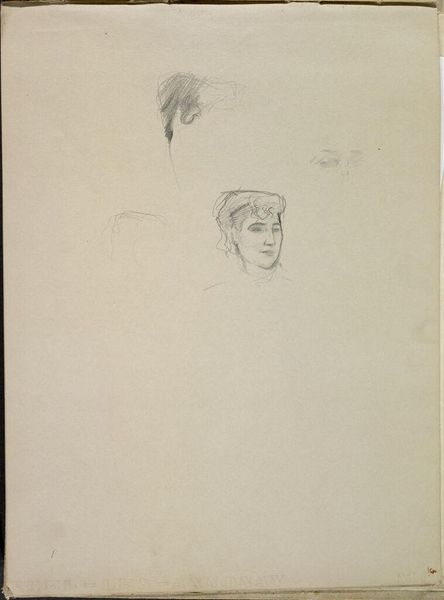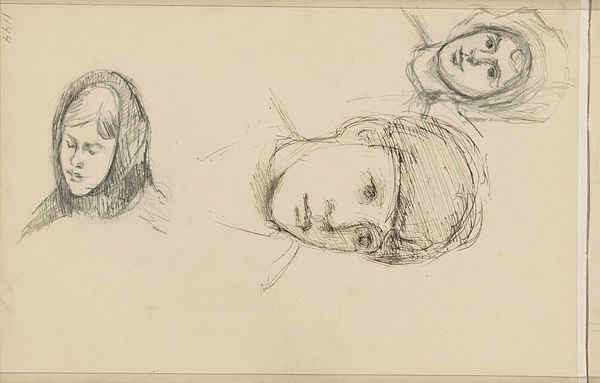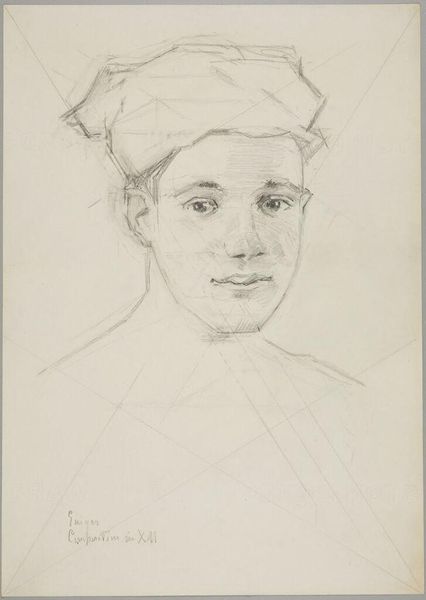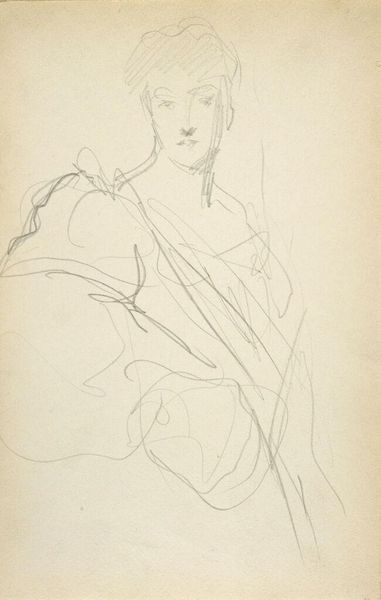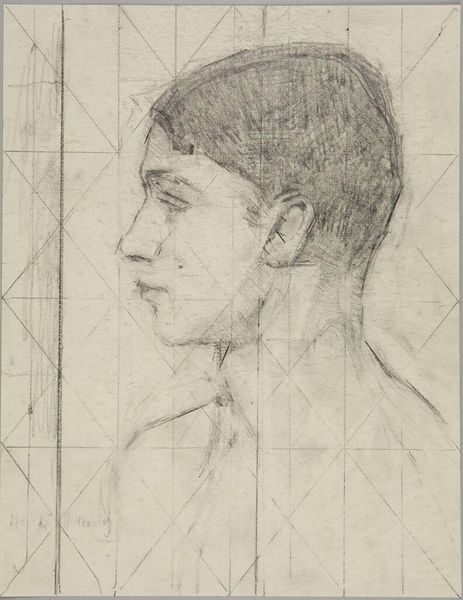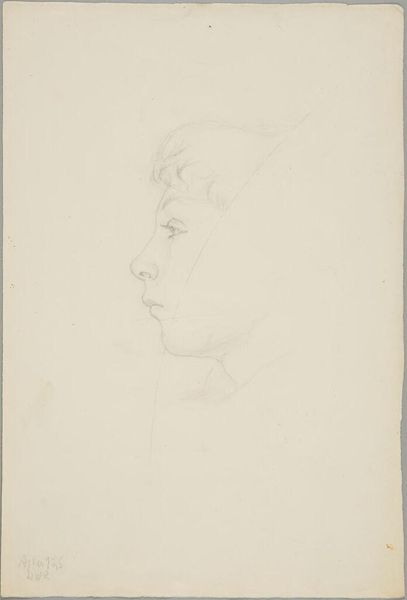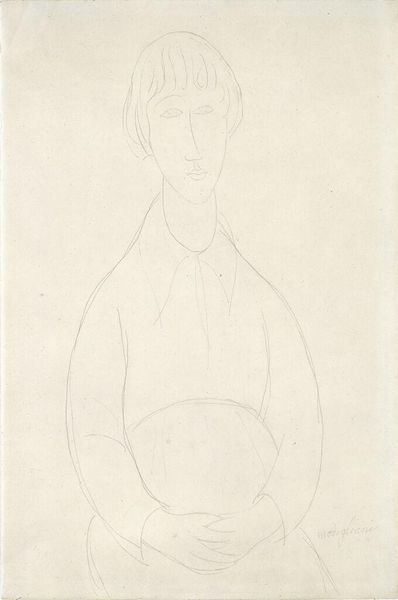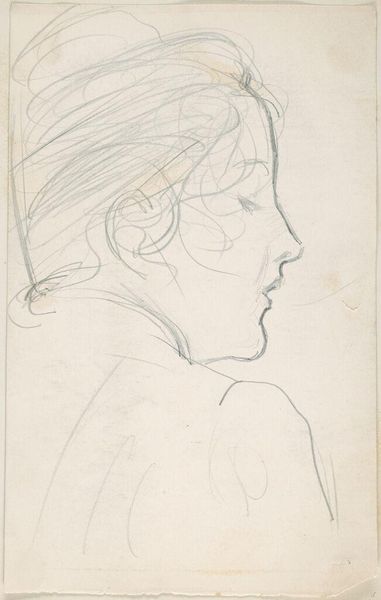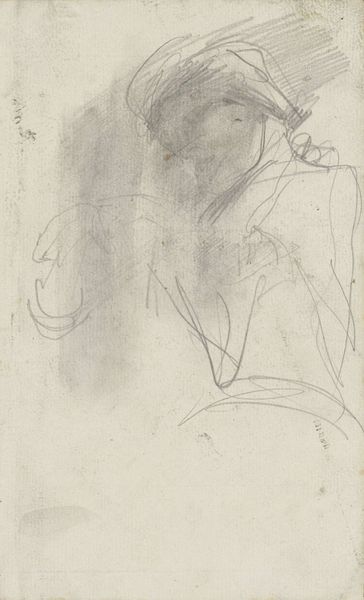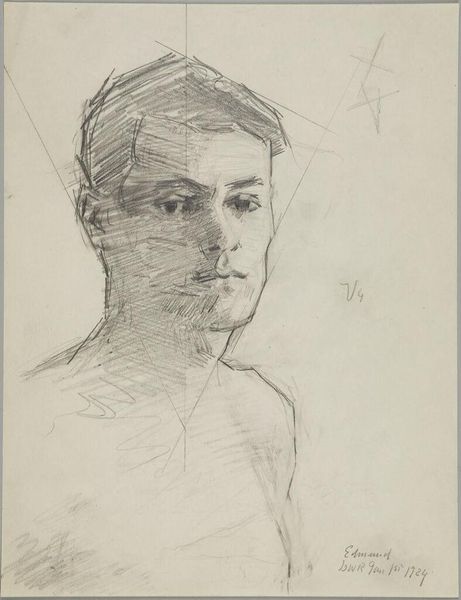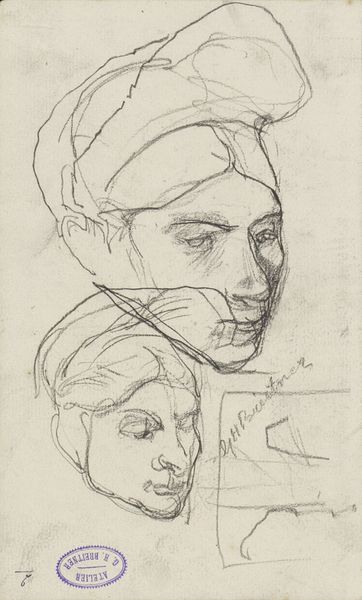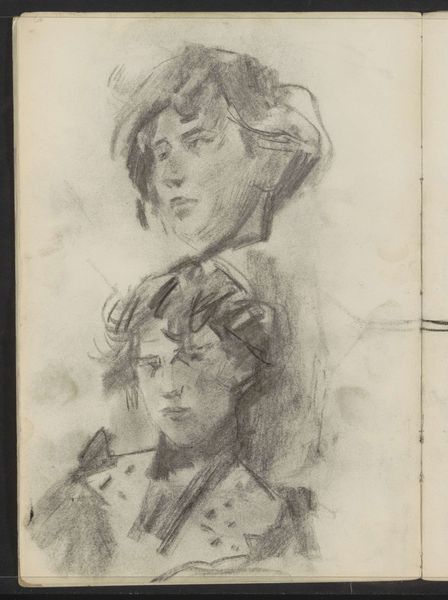
drawing, paper, pencil
#
portrait
#
drawing
#
medieval
#
paper
#
pencil drawing
#
pencil
#
portrait drawing
Dimensions: height 205 mm, width 305 mm
Copyright: Rijks Museum: Open Domain
Curator: Gazing at this pencil drawing, "Three Studies of Heads" by Jozef Israëls, made sometime between 1834 and 1911, a sense of gentle introspection washes over me. What's your immediate impression? Editor: An air of melancholic vulnerability, certainly. The ephemeral nature of the medium—pencil on paper—amplifies that feeling. You see these figures emerging softly from the pale ground. I find it interesting. Curator: Israëls' hand seems incredibly light. We see how the delicate lines delineate these figures, capturing what feels like the fleeting essence of each subject. The ethereal quality connects them across time. Note the repetition, and how memory becomes almost a layering of images. Editor: These faces speak to something deeply embedded in the cultural memory of portraiture, don’t they? They're reminiscent of medieval portrait sketches, yet without any specific narrative or power structure behind them. It seems the intention of the artist has transformed; it’s now less about status and more about revealing an inner world. How do you perceive that? Curator: That connection with inner life really resonates. Notice the eyes—they possess a luminous quality, seeming to reflect an inward gaze. They echo archetypal images of saints and mystics. The drawing’s simplicity allows the emotion in the subjects' eyes to be a central focal point. Editor: Absolutely. By stripping away the formal artifice usually attached to portraiture, Jozef Israëls brings forward the sitter’s psychological and emotional state, aligning these anonymous individuals with broader historical expressions of humanity. This piece has a definite place here at the Rijksmuseum. Curator: For me, encountering these “Three Studies of Heads” has reaffirmed how a simple medium, wielded by a sensitive hand, can speak volumes across time about shared human experience. Editor: Indeed, it serves as a quiet, contemplative reminder that art's power resides as much in its ability to evoke emotion as in its capacity to document history.
Comments
No comments
Be the first to comment and join the conversation on the ultimate creative platform.
